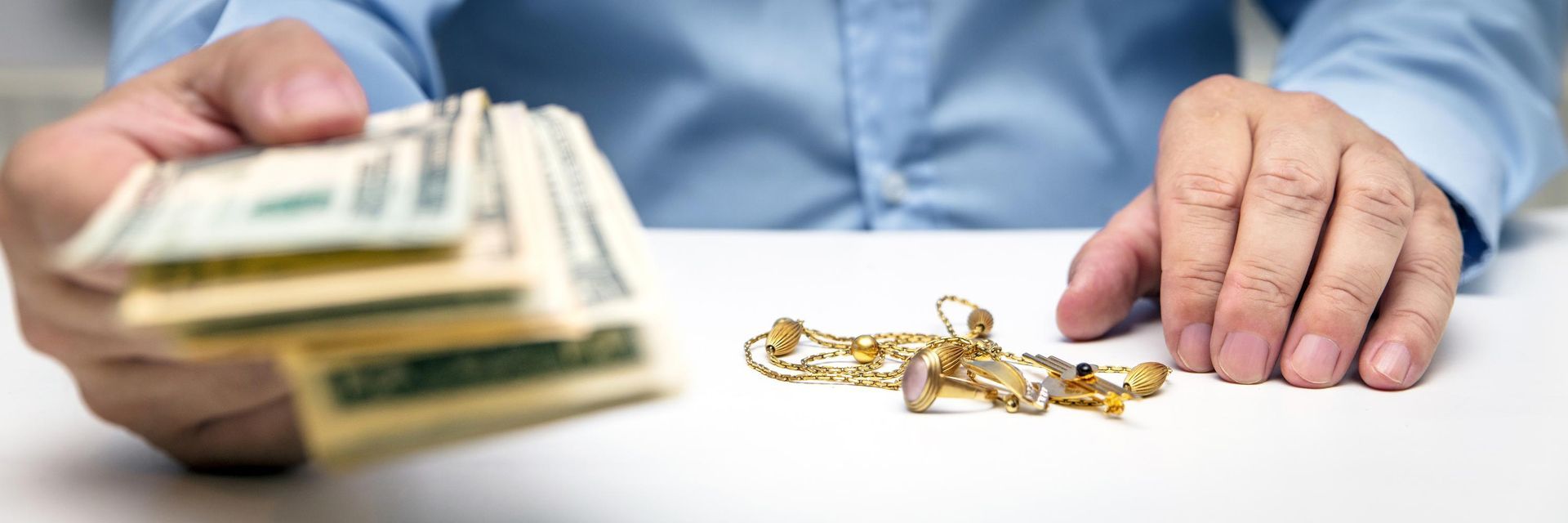
What Precious Stone Does Your Jewelry Have?
- By admin
- •
- 07 Jul, 2023
- •
Unbeknownst to many, your jewelry may contain precious stones that you can sell at a pawn shop. The value of your jewelry depends on the type of stone that your jewelry contains. Here is how to identify the four types of precious stones in your jewelry.
Diamonds
Diamonds are dazzling gemstones that captivate with their brilliance and beauty. They are formed deep within the Earth's mantle under extreme heat and pressure, where carbon atoms bond together in a unique crystal lattice structure. This exceptional molecular arrangement gives diamonds their renowned hardness and extraordinary optical properties.
The first thing to examine is the stone's sparkle. Diamonds possess an exceptional ability to reflect and refract light, resulting in a brilliant display of white light known as "fire." Hold the jewelry up to a light source and observe how the diamond scintillates and disperses light.
Next, consider the diamond's color. The purest and most valuable diamonds are completely colorless, allowing them to transmit light with utmost clarity. Assess the stone's hue by comparing it to a diamond color grading scale, which ranges from D (colorless) to Z (light yellow or brown). Look for any noticeable tints or discoloration that may affect the diamond's overall appearance.
Sapphire
Sapphire is renowned for its blue color, although it can also be found in pink, yellow, green, and even colorless. As a highly sought-after gemstone, sapphires are often used in jewelry, such as rings, necklaces, and earrings.
To identify sapphires in jewelry, you can look for certain characteristics. Start by examining the color of the stone. True sapphires typically have a vibrant and rich color that is evenly distributed throughout the gem.
Another aspect to consider is the gem's transparency. Sapphires are generally transparent to translucent, allowing light to pass through and creating a brilliant sparkle. However, keep in mind that some sapphires, particularly those with inclusions or natural imperfections, may have varying levels of transparency.
Emerald
Emerald is a precious gemstone renowned for its captivating green color and rich history. To identify emeralds in jewelry, observe the vibrant color of the stone. Genuine emeralds possess a distinct deep green hue, often described as a lush meadow or a forest canopy. Look for a color that is vivid, intense, and evenly distributed across the gem. Be wary of emeralds that appear too light or yellowish, as they may be of lower quality or they could potentially be complete imitations.
Next, focus on the clarity of the emerald. Natural emeralds commonly contain internal inclusions or tiny imperfections. These imperfections are referred to as jardin due to their resemblance to a garden. These inclusions are typically visible to the naked eye and are part of an emerald's natural character. They should not obstruct the transparency or brilliance of the gem but rather add to its unique charm.
Consider the cut of the emerald as well. This gemstone is often cut in a step-cut style known as the "emerald cut," which features long, rectangular facets.
Ruby
Ruby belongs to the corundum family, renowned for its vibrant red color. When it comes to identifying rubies in jewelry, focus your attention on the color.
Rubies are prized for their intense red hue, ranging from vivid crimson to deep burgundy. A true ruby possesses a distinct red coloration that is neither too pink nor too purple. Look for a rich, fiery shade that commands attention and exudes a sense of passion.
Next, examine the clarity of the stone. Rubies often contain natural inclusions, which are internal characteristics formed during their creation. These inclusions are not necessarily flaws but can be seen as unique birthmarks, giving each ruby its individuality.
Do you have any precious stone jewelry that you want to sell? 2 J's Pawn & Gun can buy your items at unbeatable prices. Contact us now or visit our Davie, FL, location for more information.
2 J’S PAWN & GUN
BUSINESS HOURS
PAYMENT OPTIONS








